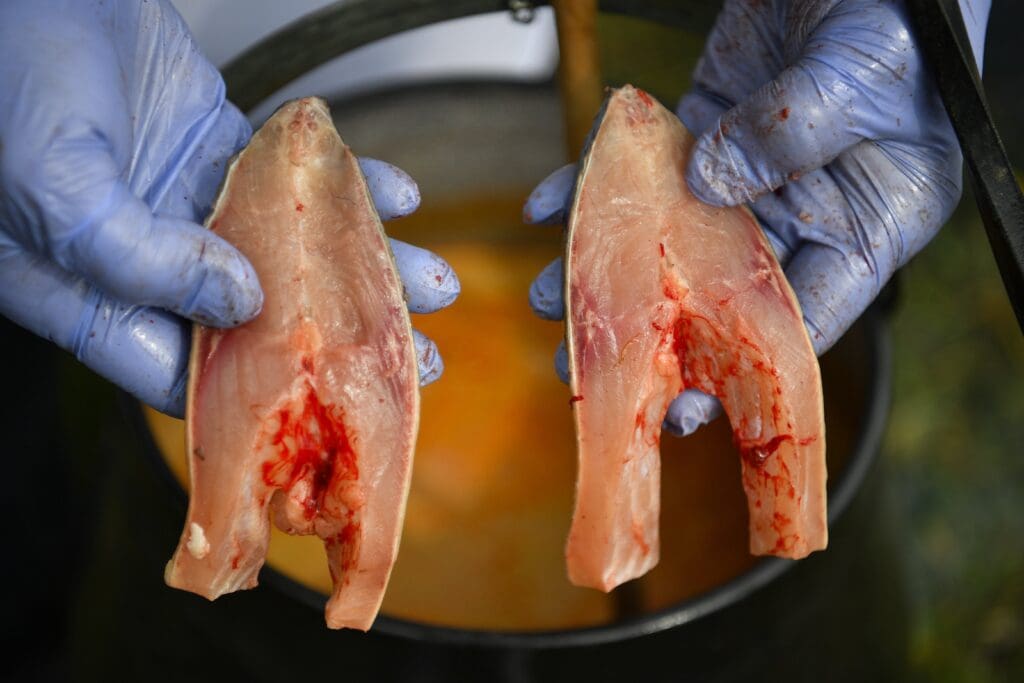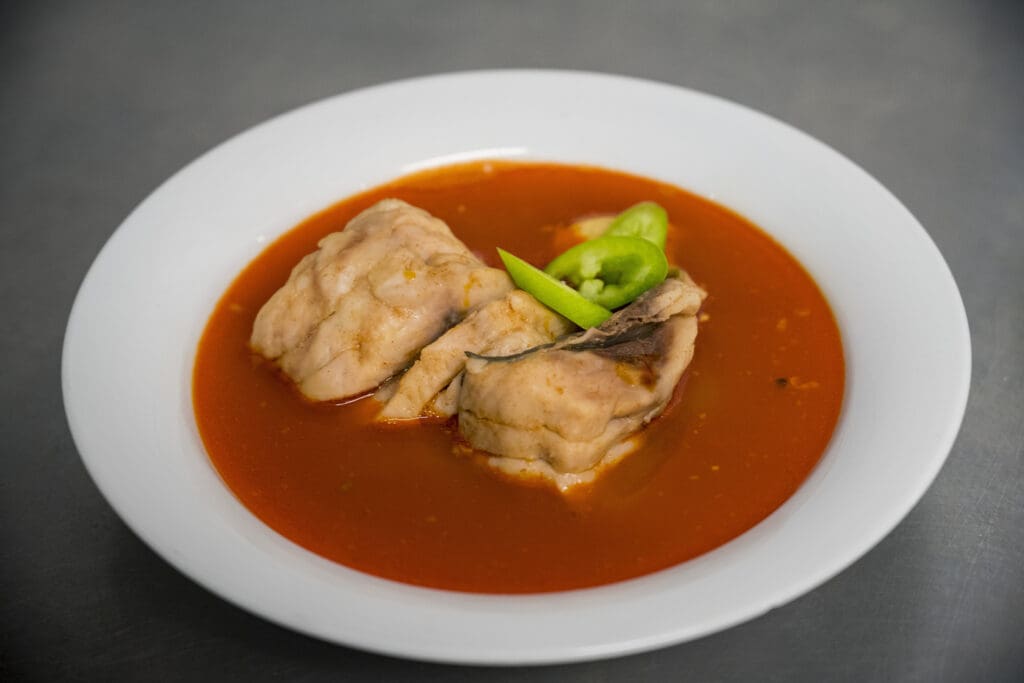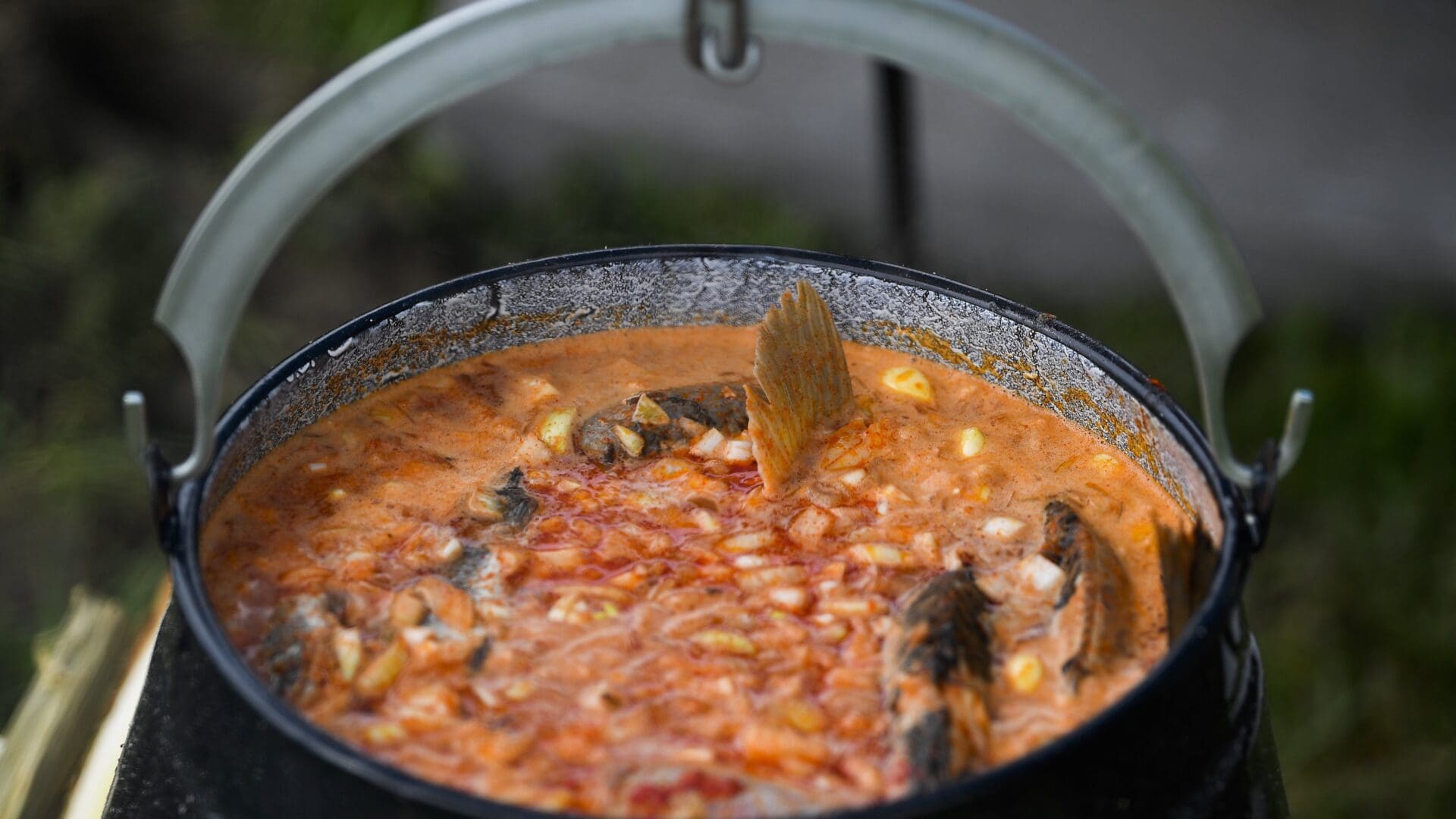Fasting is an integral part of the preparations leading up to Christmas for Christian believers. In the past, during this period, people used to consume pasta, fruits, and vegetables. However, in the 1960s, the strict fasting rules were eventually eased, and different types of dishes started appearing on the Christmas Eve dinner table. One such dish is the very Hungarian fisherman’s soup (‘halászlé’) and fried fish.
The presence of fish on the Christian fasting menu holds symbolic significance. As the Scripture says, Jesus Christ turned the apostles, humble fishermen, into fishers of men, and thus the fish became a symbol of baptism.
The consumption of fish also has a prominent role in folk tradition. It was believed that the fast-moving fish stimulates those sitting at the table to move similarly in the New Year, while the scales of the fish symbolize wealth and abundance. Similar meanings, by the way, are attributed to beans, lentils, and poppy seeds on the Hungarian festive table.
The Origins of Fisherman’s Soup
The first references to fisherman’s soup date back to the 1800s. The initial fisherman’s soup was, unsurprisingly, made by fishermen and was known as ‘Halaszly.’ They used Turkish pepper for seasoning the fish parts, and the fish was cooked in peppery broth. In another region, fisherman’s soup was known as ‘halacli,’ and it was seasoned with paprika. The Balaton fisherman’s soup gained praise as more and more people started making it from various fishes like carp and pike. The fish slices were then salted, seasoned with paprika, and cooked with onions and bay leaves. Subsequently, fisherman’s soup became popular across the country, prepared with different fishes based on various recipes, but the fundamentals remained the same everywhere. The name ‘fisherman’s soup’ is owed to those fishermen who, lacking kitchen tools, prepared this now widely popular dish far from their homes on the shores of lakes or rivers.

According to Hungarian ethnographic literature, fisherman’s soup is considered synonymous with fish stew prepared in a long broth. The essence of the ‘fisherman’s style’ lies in adding all ingredients to the cauldron simultaneously. The authentic folk fisherman’s soup includes a variety of good-quality fish, especially carp, a unique preparation method, the use of service wood and a cauldron, and, alongside appropriate and various spices, a crucial and indispensable ingredient: the paprika, also known as ‘törökbors,’ meaning ‘Turkish pepper’, and red onion. Many argue that straining the fisherman’s soup is unnecessary, as its preparation method and essence lie in the quality paprika, abundant onions, and fish. However, various preparation traditions emerged along the Tisza, on both sides of the Danube, at Lake Balaton, in fishing communities, and in bourgeois kitchens, starting from the 19th century.
For instance, a crucial element in the classic Szeged fisherman’s soup is the straining process.
The Essential Ingredients Are Chosen Carefully
The essence of Hungarian fisherman’s soup includes three important ingredients:
The Fish: Hungarian fisherman’s soup should only be made with carp. Other fish can serve as complements to enhance the soup. White-fleshed (and generally more expensive) fish, such as pike or perch, should not be overcooked as their flesh tends to disintegrate. Seafood is entirely unsuitable for Hungarian cuisine.
The Onion: Only the so-called ‘old’ onion is suitable for fisherman’s soup. Those aiming to create genuine fisherman’s soup set aside last year’s red onions because green onions and cooking onions are unfit for this purpose. Attempts with onion creams or dried onions are not advised. Makó and its surroundings are the most notable onion-producing areas in Hungary.

The Paprika: Perhaps the most crucial component of fisherman’s soup is paprika. Good homemade paprika is produced almost everywhere. Renowned paprika-producing regions include Szeged, Kalocsa, Bogyiszló, and Cece.
If we were to categorize Hungarian fisherman’s soups, the main groups would be the Danube fisherman’s soup, the Tisza fisherman’s soup, and the Balaton fisherman’s soup. This does not imply that there are only three types of fisherman’s soup. For example, along the Danube, each city has its unique way of preparing fisherman’s soup, distinct from Komárom to Paks. The difference lies in the recipe. Danube fisherman’s soups often include pasta, for instance.
The Only Fisherman’s Soup Hungarians Consider Genuine
Fisherman’s soup is prepared in many countries around the world, but Hungarians consider only their own version to be the true one. Perhaps it is the distinct taste of sea fish or the different seasoning that makes others seem anaemic, and Hungarians would not refer to them as fisherman’s soup.
Considering that Hungary is home to two major rivers, it is unimaginable not to have two schools of thought regarding the ‘authentic’ preparation of fisherman’s soup. Thanks to Rézi néni’s cookbook from Szeged, it seems that the Tisza River lobby is now more dominant. Both in restaurants and the fish soups made around the house, they are prepared more in the Tisza style. The fundamental difference between the two methods can be somewhat simplified into a single sentence. In the Tisza style, the base broth is prepared first, and then the fish is added, while in the Danube style, everything is added at once, including pasta. (It is worth noting that fisherman’s soup from Lake Balaton is also prepared in the Tisza style.)

There are countless recipes for both types, and even cookbooks do not provide a unified solution. While diversity could be seen as a positive aspect, in this case, the lack of consensus is more probable. From the store-bought fisherman’s soup cube to the creativity of ‘I’ll just add paprika and tomatoes,’ and the solutions that happen to be rendered inedible by a large handful of cherry peppers, everyone prepares their favourite soup differently.
Considered Unusual And Simple, But Still Packs A Punch
As fisherman’s soup in Hungary is considered a delicacy now, many tourists enjoy it on the beaches of Lake Balaton in the summer. Although it is considered a Christmas dish, throughout the years it started to emerge in every restaurant in the country and is now consumed every year of the month.
Non-Hungarians travelling in the country have almost certainly tried this dish already, and the opinions are usually resoundingly positive. Many express their surprise that a dish so simple and unusual could taste so heavenly. Hungarians are indeed proud of their fisherman’s soup, and as it is almost always prepared using local fish, the freshness of taste is incomparable to anything store-bought.
Related articles:







